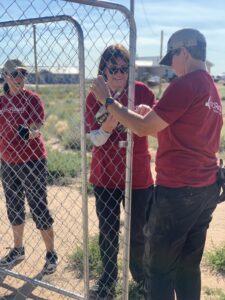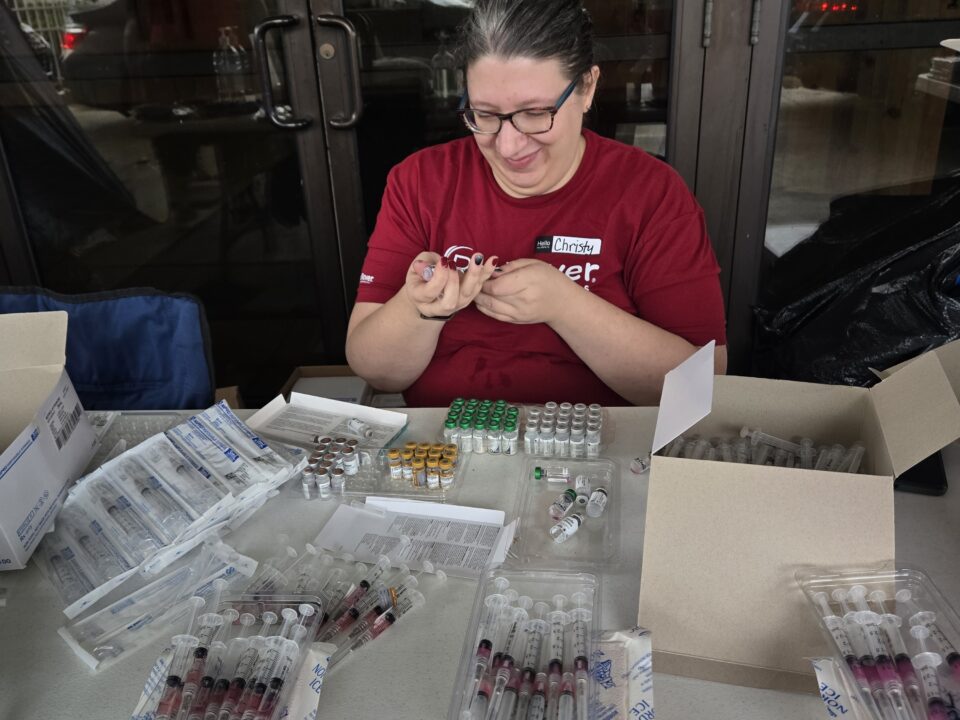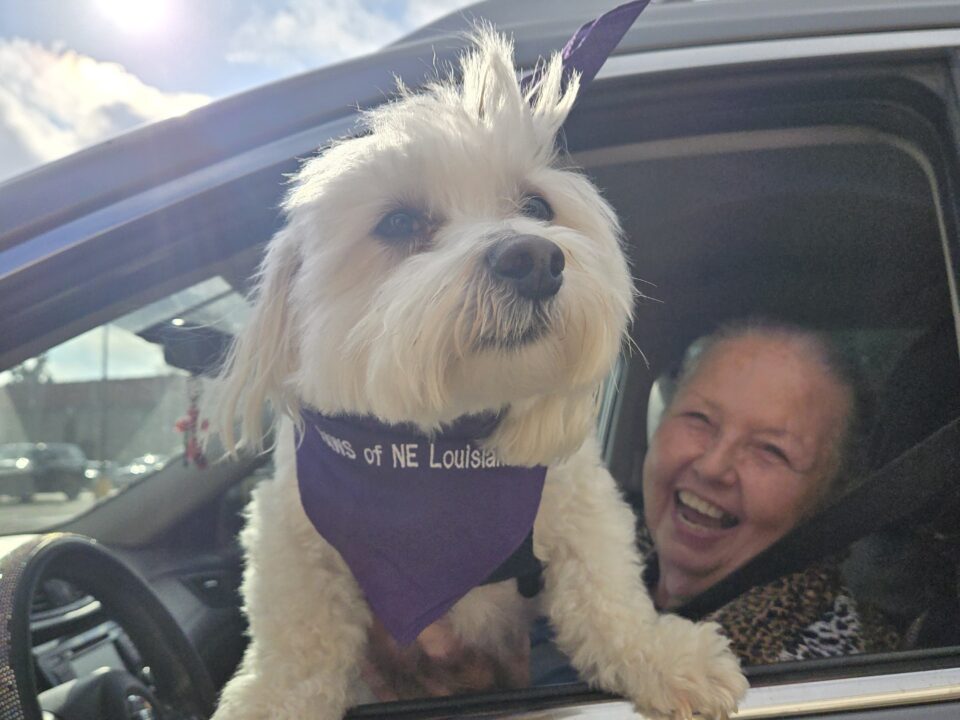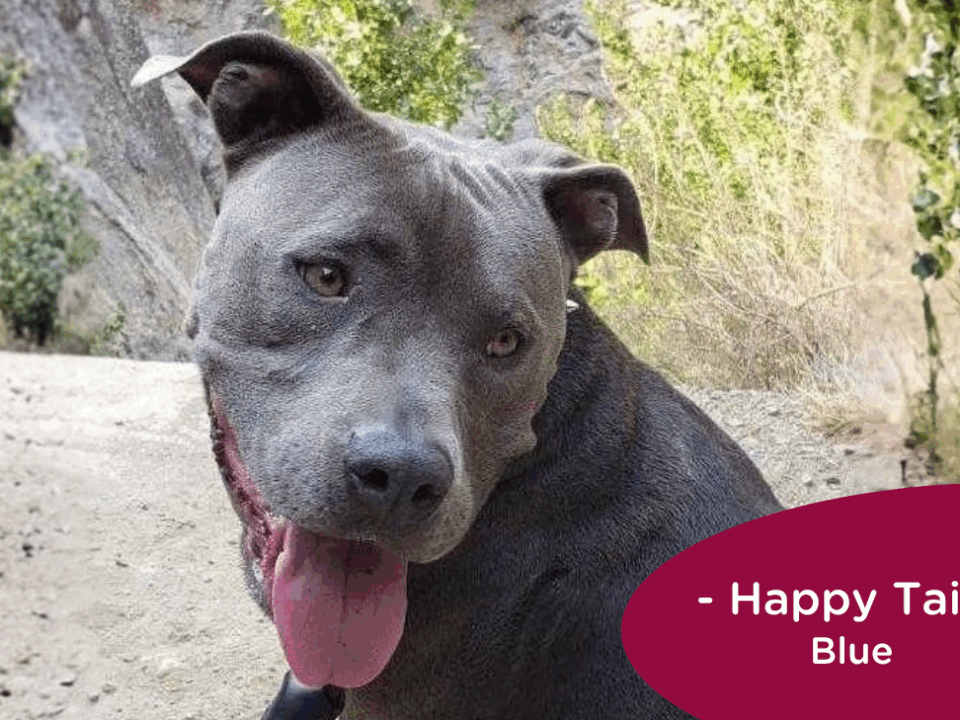RedRover Responders Build Safe Enclosures for Outdoor Dogs on the Navajo Nation
October 2nd, 2023
By Devon Krusko, Field Services and Community Programs Manager
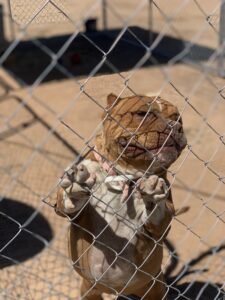 Our second visit to the Navajo Nation to assist the Parker Project brought an exciting new unchaining initiative: building safe enclosures for dogs that live chained or tethered outside. When you think of dogs that live on the reservation you likely picture them free-roaming, and while that is accurate for a fair number of them (in general, 70% of dogs live free-roaming globally!), many owned pups live chained or tethered.
Our second visit to the Navajo Nation to assist the Parker Project brought an exciting new unchaining initiative: building safe enclosures for dogs that live chained or tethered outside. When you think of dogs that live on the reservation you likely picture them free-roaming, and while that is accurate for a fair number of them (in general, 70% of dogs live free-roaming globally!), many owned pups live chained or tethered.
Over the course of four days and thanks to an incredible amount of work from volunteers, 166 animals were vaccinated, spayed or neutered, or seen for medical needs and injuries, and enclosures were built for 22 outside dogs and their families.
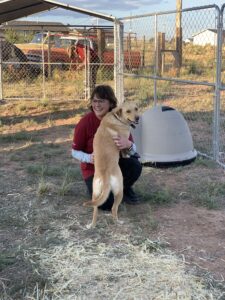 There’s a lot of judgment surrounding outdoor dogs. It’s important to lead with empathy, kindness, and a desire to learn and understand. Wherever people struggle to access resources, and systems are not in place to provide them, the services for animals are also inaccessible. For many folks on the Navajo Reservation accessing veterinary care could mean driving 200-plus miles. When just under 40% (data as of 2019) of the population is living below poverty, allocating money towards gas can be a challenge.
There’s a lot of judgment surrounding outdoor dogs. It’s important to lead with empathy, kindness, and a desire to learn and understand. Wherever people struggle to access resources, and systems are not in place to provide them, the services for animals are also inaccessible. For many folks on the Navajo Reservation accessing veterinary care could mean driving 200-plus miles. When just under 40% (data as of 2019) of the population is living below poverty, allocating money towards gas can be a challenge.
Fencing around a home is expensive and a privilege. Navajo residents are caring for many dogs, and not all of them get along. Housing may be rented with restrictions on indoor dogs, or there may be many family members and animals living together. On this deployment, it was not uncommon for us to work with families who had over 5 dogs. In fact, multiple people we worked with had new dogs that had just recently showed up to their property looking for food and companionship with folks taking on their care unexpectedly with already limited resources.
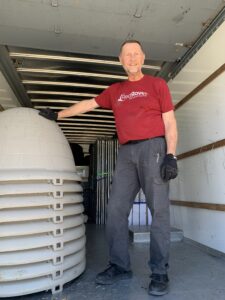 Chaining or tethering is the most affordable way to keep dogs safe from many concerns: other packs of dogs outside of their territory, getting hit by a car, being taken by a well-meaning person that’s passing by, exposure to disease, or many other possible dangers abound. People are doing the best that they can with what they have and provide for their pups in innovative ways.
Chaining or tethering is the most affordable way to keep dogs safe from many concerns: other packs of dogs outside of their territory, getting hit by a car, being taken by a well-meaning person that’s passing by, exposure to disease, or many other possible dangers abound. People are doing the best that they can with what they have and provide for their pups in innovative ways.
As with any community project, getting to know the people and their pets is the most meaningful part. The families that we worked with were so incredibly grateful, their dogs so very loved, and the joy and laughter of seeing once tethered pups engage in zoomies and play with new enrichment items is an indescribable, full-hearted feeling that truly brings people together.
